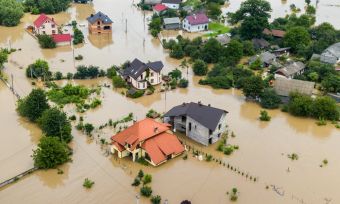What kind of insurance do you need for your home? If you are a homeowner or you own an investment property, building insurance is one of the types of cover you need to consider.
Building insurance plays a crucial role in protecting homeowners and property owners in New Zealand. It provides financial coverage against unexpected events and damage to their buildings, ensuring peace of mind and security.
Understanding the coverage offered by building insurance is essential for homeowners to make informed decisions and adequately protect their assets. In this article, we will explore what building insurance typically covers in New Zealand.
What is building insurance?
Building insurance provides coverage for residential buildings against loss or damage resulting from insured events. These include fire, flood, storm, theft and earthquakes.
In addition to protecting your home, it can extend coverage to various permanent structures such as sheds, pools, retaining walls and fixed water features.
Most mortgage lenders won’t lend to borrowers unless they take out adequate building insurance to cover the cost of replacing the mortgaged property.
However, even if you don’t have a home loan, building cover is still important, as it provides a vital financial safeguard in the event your property is damaged or destroyed.
What does building insurance cover?
Dwelling Coverage
Building insurance covers the structure of a dwelling, including the main house, plus attached structures, such as garages, decks, and fences. It typically includes protection against fire, storm damage, earthquakes, vandalism and theft. Dwelling coverage ensures that repairs or rebuilding costs are covered if the insured property suffers damage or loss due to covered events.
Fixtures and Fittings
Building insurance often extends coverage to fixtures and fittings within the insured property. These include built-in cabinetry, flooring, lighting fixtures, plumbing, and heating systems. In case of damage or loss caused by covered perils, the insurance policy may cover the cost of repairing or replacing these fixtures and fittings.
Ancillary Structures
Apart from the main dwelling, building insurance can also cover other structures on the property, such as sheds, workshops, and standalone garages. These structures are typically insured against perils similar to those covered for the main dwelling.
Landscaping and Outdoor Features
In some cases, the insurance may also cover landscaping elements and outdoor features, such as retaining walls, swimming pools, and outdoor entertainment areas. It’s important to review the policy details to understand the extent of coverage provided for these features.
Additional Living Expenses
If a covered event renders the insured property uninhabitable, building insurance policies often include coverage for additional living expenses. This coverage helps homeowners with the costs of temporary accommodation, food, and other necessary expenses while repairs or rebuilding take place.
Liability Coverage
Policies commonly include liability coverage, which protects homeowners against legal liability for injuries or damages that occur on their property. This coverage can help cover legal expenses and compensation costs if a third party sues the homeowner for injury or property damage that occurred within the insured premises.

How much does building insurance cost?
As every home is different, there is no one definitive answer. The cost of building insurance depends on:
1 The quality of the home
The more expensive the home, the more expensive it will be to replace, therefore you’ll need a greater level of insurance cover, which will cost more in premiums.
However, it’s worth noting that the sum insured doesn’t cover the value of the land on which the home is built. This means that if you pay $1m for a home, you don’t need to insure it for $1m. If the land is valued at $600,000 and the home at $400,000, you sum insured only needs to cover the cost of the property, $400,000.
Also be aware of inflation and rising building costs, which can significantly increase the cost of rebuilding a home. Some insurance companies automatically review your sum insured each year, to keep in line with inflation. But if you’ve installed a new kitchen or bathroom, or undertaken other significant home renovations, you will need to factor the costs into a revised level of insurance cover.
It is crucial for property owners to carefully review their insurance policies annually, and to understand the specific coverage and exclusions to ensure they have adequate protection for their valuable assets.
2 The home’s location
Over the past few years, insurance companies have reviewed the way they assess risk. Historically, the increased costs of risk from natural disasters were spread across entire regions. However, now insurers look street to street and house to house to adjudge property owners’ risk levels.
This means that if a home sits atop a crumbling cliff, or stands in an low-lying area prone to flooding, it will cost more to insure than a home with a safer risk profile.
How can you keep the cost of building insurance down?
One of the best ways to keep building insurance premiums down is to shop around. Don’t just pay your renewal without taking the time to get a few quotes from different insurers first, as you may be surprised by the savings you can make. Another cost saving method is considering having a higher excess and lower premiums, but remember this would mean you would need to pay more if you make a claim.
View Outstanding Value Home & Contents Insurance Awards
About the author of this page
This report was written by Canstar Content Producer, Caitlin Bingham. Caitlin is an experienced writer whose passion for creativity led her to study communication and journalism. She began her career freelancing as a content writer, before joining the Canstar team.
Enjoy reading this article?
You can like us on Facebook and get social, or sign up to receive more news like this straight to your inbox.
By subscribing you agree to the Canstar Privacy Policy












Share this article